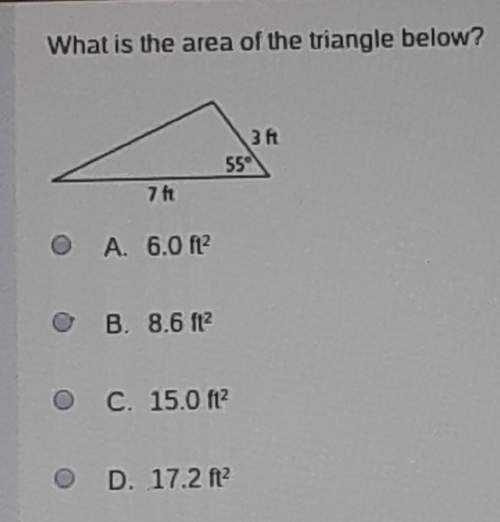?
Quadrilateral ABCD has vertices A(-2, 3), B(0,4), C(3,6), and D(1,1). The
vertices of quadr...

Mathematics, 26.02.2021 18:50 bethyboop1820
?
Quadrilateral ABCD has vertices A(-2, 3), B(0,4), C(3,6), and D(1,1). The
vertices of quadrilateral EFGH are E(-2, -3), FO, -4), G(3, -6), and H(1,-1). Which
single transformation of quadrilateral ABCD can be used to show that the two
quadrilaterals are congruent?
O
a 90° counterclockwise rotation about point B
a reflection across the x-axis
O
a translation 6 units down
a reflection across the y-axis

Answers: 2


Another question on Mathematics

Mathematics, 21.06.2019 15:20
Which is the equation of an ellipse with directrices at x = ±4 and foci at (2, 0) and (−2, 0)?
Answers: 3

Mathematics, 21.06.2019 16:00
Ernest is purchasing a $175,000 home with a 30-year mortgage. he will make a $15,000 down payment. use the table below to find his monthly pmi payment.
Answers: 2

Mathematics, 22.06.2019 00:20
One file clerk can file 10 folders per minute. a second file clerk can file 11 folders per minute. how many minutes would the two clerks together take to file 672 folders?
Answers: 1

Mathematics, 22.06.2019 01:00
Suppose your sat score is 2040. a college with an average sat score for admintted students of which of these would most likely be your best option?
Answers: 1
You know the right answer?
Questions








History, 04.08.2019 08:30


Mathematics, 04.08.2019 08:30



English, 04.08.2019 08:30


Mathematics, 04.08.2019 08:30








